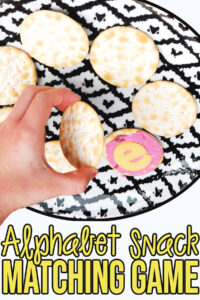Alphabet Matching Puzzle Printable: Great for Pre-K
This alphabet matching puzzle is a fun tool for helping children learn to identify each letter of the alphabet and its most common initial sound, both of which are important phonemic awareness skills for pre- and early readers.
Learning to read and write is a process containing many moving parts, each of which takes time and plenty of practice to master. Developing phonemic awareness is one of these important moving parts and fun alphabet activities are a fabulous tool for engaging young learners with these important skills.

Alphabet Matching Puzzle Printable
What is phonemic awareness? Phonemic awareness is the ability to identify and manipulate the sounds in words. The individual units of sound within words are called phonemes. For example the word bat has three phonemes – b/a/t. The ability to match a phoneme to its corresponding grapheme is also essential. A grapheme is the letter (e.g. the letter b) or small group of letters (e.g. /ai/ as in train and /igh/ as in night) that represent a sound.
More familiar to many of us is the term ‘phonics.’ Phonics is the process of teaching children to correlate sounds (phonemes) with their corresponding letters or letter groups (graphemes).
Why play games to develop phonemic awareness with early readers? Playing simple games such as our Letter Sound Matching Game or Alphabet Mazes, as well as the Alphabet Matching Puzzle featured in this article (see the instructions for downloading and printing below), helps children to develop these important phonemic awareness skills. Plus they’re fun and learning that is fun is super engaging and much more likely to support learning.

How to Play With the Alphabet Matching Puzzle
This printable alphabet puzzle includes 26 letter cards and 26 picture cards – one picture representing the most common initial sound of each letter. It can be played two ways;
1. Playing Alphabet Match with the Puzzle Pieces
First decide how many of the letters your child will start with. The complete set of 26 letter and picture cards may be too many, depending upon the age and development of your child. You could instead start with the game cards that correspond to the letters of your child’s name, or choose just five to ten letters to explore each time you play.
To play, mix up the selected cards, displaying them face up on the table top – I like to line up the letter cards in alphabetical order and then mix up the picture cards.
Invite your child to choose one picture card to begin. Ask them to tell you the name of the object shown on the card. Then ask them to tell you the beginning letter sound they can hear at the start of the word for the picture. Then invite them to find the corresponding letter card and match them together.
Continue matching the picture cards with the letter cards until they are all in matching pairs.

2. Playing Memory Match/Concentration Game with the Pieces
This is a fun extension for children who are familiar with the matching game above. It’s also fun for small groups of children to play together. Before starting play, lay all of the cards being used (both letter and picture cards) face down on the table.
Players then take it in turns to turn over just two cards. If the two cards chosen match (initial sound of the picture matches the letter), the player keeps the pair and takes another turn. If they don’t match, the cards are both turned back over again (remaining in the same place). Players need to watch carefully to keep track of where the matching pairs are hiding!
The game ends when all of the pairs have been found. The player with the most matching pairs is the winner.

Printing Your Alphabet Matching Puzzle
Click here to download: Alphabet Matching Puzzles . Save the PDF to your computer. Open the PDF and print the pages you require. When printing, select “Fit to printable area” (or similar) to ensure the page fits with your printer type and local paper size (these have been created at A4 size). I suggest printing onto card stock or matte photo paper.
The printable includes a printed backing paper. To use the backing page, turn the printed alphabet puzzles pages. Turn over and place them back into the printer to print the background onto the other side – note, this is optional, if your cardstock is thick enough, you may choose not to print the background.
Laminate the printed cards for durability.

Having trouble accessing or downloading the file? Please try a different internet browser.
Please note: All Childhood 101 printables are for personal use only, you may not use any part of this content for commercial purposes-that includes selling the document, giving it away to promote your business or website, or printing the file to sell. You may not share, loan or redistribute these documents. Teachers may use multiple copies for students in their own classroom.



